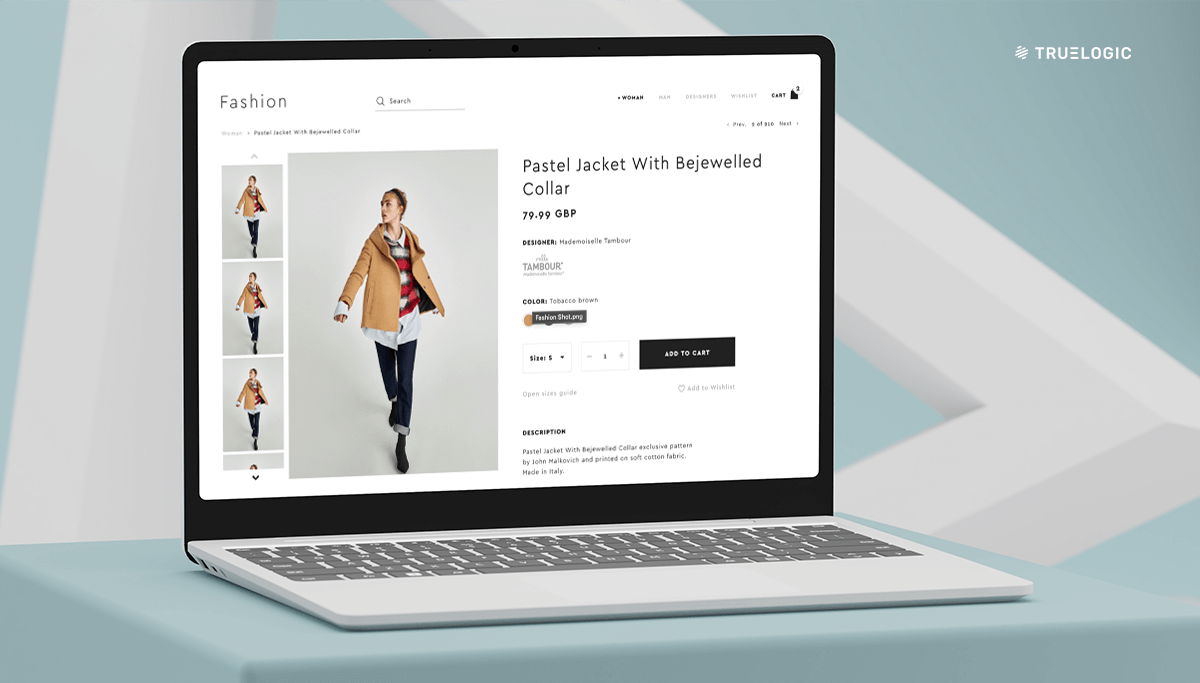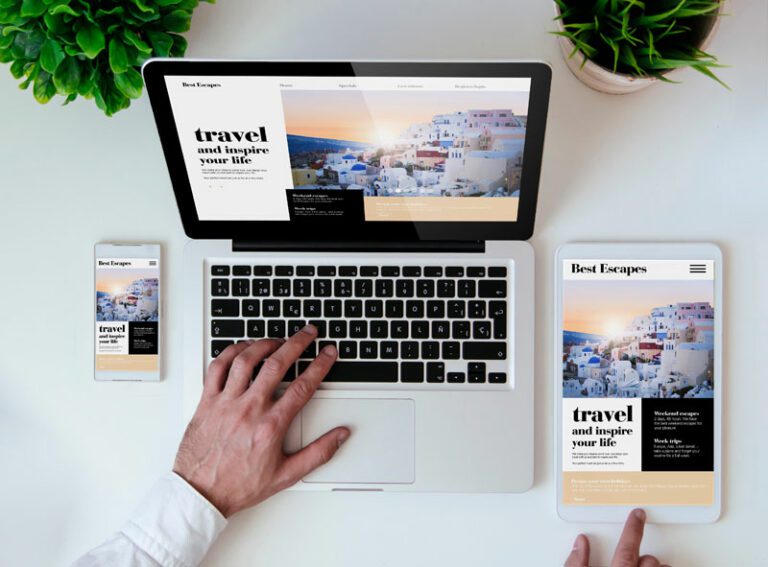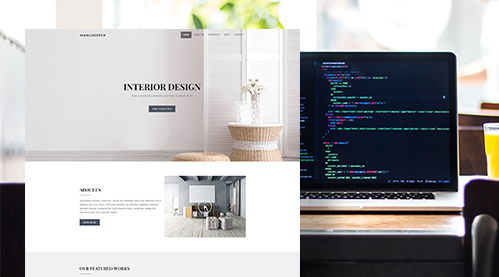How well has your brand kept up with the latest website trends and tech?

A well-designed website is every brand’s chance to make a great first impression. In a few clicks or taps, customers are able to score brands on metrics like credibility, modernity, relatability, creativity, and digital savviness. Therefore, in many ways, good web design can make or break a brand. What, then, constitutes a good website, and what should brands be paying attention to when conceptualizing or revamping theirs?
Like most artistic pursuits, there really isn’t a guaranteed path to success. However, there are principles of design, as well as annual digital trends, that brands should know. The best websites—regardless of a brand’s personality—are readable at first glance, easy to navigate, coherent in tone, uncluttered, and make use of only high-resolution images. When it comes to content, it should be readily accessible and regularly updated. But all these are simply the skeleton of web design. From here, brands can dress these bare necessities with muscle and sinew, experimenting with animation, interactive elements, videos and audio, layouts, and other experiential features.
Making things even more exciting is how annual digital trends can guide brands on how to combine and customize these elements to further individualize their websites. For instance, in 2022, there was a departure from aesthetics that feel raw and undone and are seeing websites use imagery, text and colors that evoke safety, comfort, and recovery—a response to the tumultuous last two years. To give brands a starting point for what styles and designs they can consider adopting, we list down 15 of this year’s most popular website trends.
Calm and comfort your customers
As mentioned earlier, brands aren’t (or shouldn’t be) impervious to the difficulties their patrons have had to face in the two years of pandemic living. Brands must communicate empathy and understanding to customers to send the message that we’re all in this together, and by trusting your brand, they can gradually transition to a more peaceful state of existence despite the challenges that remain unsolved. Do this by choosing the right vocabulary and color scheme, and marketing products and services as the best companions to have currently.
Communicate a safety-first message
Speaking of products and services, it’s now important to mention if and how your products have gone through rigorous safety and quality checks. Customers have now learned to look for certifications, awards, and other legitimate markers that show them you took COVID risks into serious consideration and made the necessary adjustments to make your brand COVID-safe.
Return to minimalism
Brutalism was big in 2020 and was enjoying an uninterrupted streak of success, until 2022 came and folks set their sights on a post-pandemic world. As the world hopes to embrace a new normal, they’re banking on the opportunity to start from scratch. A clean slate rouses feelings of effectively purging the bad and making lots of room for the good to come. Minimalist websites can encapsulate this sentiment well.
Use text as images
Still in line with 2022’s minimalist trend, we’ve seen more websites use text as hero images. Words can replace graphics and photos when the right text, size, color, and background are employed. When you’re able to do away with too many images and replace them with text that’s just as eye-catching, you’re also more likely to have a sleeker and less cluttered website.
Experiment with micro-interactions
The problem with minimalism is that it can be flat and boring, or it might not match your brand image if you’re all about being loud and bold. Fortunately, there are small but impactful tweaks you can do to counter this. Micro-interactions are getting more time in the spotlight this year; these are the cute, surprising but unexpected effects that can delight customers and make the ordinary action of browsing through a website fun again. Hovering over an image and having information about the item pop up is one example of a micro-interaction. Tapping a menu and having menu items fan out instead of traditionally drop downwards is another example.
Add subtle animation
“Subtle” is the keyword here. You don’t want your website to look like a cartoon reel, but you do want it to have some movement and life. Brands can achieve this by adding animation in the background. Animation should never cover content, come with auto-play audio, or show up as a popup window that needs to be closed for browsing to resume. Animation should be unobtrusive and as seamlessly integrated with the non-clickable parts of a website as possible. They should enhance the main content, not steal attention from it. Some websites have even gone as far as replacing static images with background animation.
Source: Statista
Present data as graphics
The pandemic made ordinary people care about graphs, charts, and other modes of presenting data. But even with this new interest, most laypeople want to see data presented creatively. Straightforward numbers and percentages won’t cut it. Instead, make use of maps, scales, and approachable imagery to get the message across.
Choose organic shapes and material design
Organic shapes are those that mirror what we see in the natural environment: symmetry, rounded corners, flexible lines, curves rather than edges. Material design is closely related to this; it’s all about making man made images (such as icons and buttons) look as realistic as possible (by adding shadows, gradients, or texture). Gearing a website to show more of these kinds of imagery is not only better for the eyes, but it soothes the mind, too. It makes prolonged immersion in a digital space feel much closer to being in “real” life.
Pay attention to typography
Vintage fonts are a big trend in 2022 for brands that can afford to incorporate them. Their old timey feels are nostalgic, and nostalgia is comforting. Bold fonts are in too, and they can be used as a good contrast to minimalist design.
Let the thumb guide you
Literally, make your layouts “thumb-friendly.” A layout can look amazing in theory, but if it doesn’t adhere to the natural movement of thumb scrolling (the preferred way of most shoppers to browse a website on mobile), you’re going to be at the losing end. Some brands have even gone the extra mile by making layouts changeable depending on whether customers are left or right-handed so that they don’t have to strain their hands while interacting with website elements located on different parts of the screen. If this is something you’d specifically like to do, bring it up to both your web development team and conversion rate optimization services provider for maximum utilization.
Make your website more accessible to the differently-abled
Those with visual, auditory, and tactile impairments should be able to gain independence as website technology becomes more sophisticated, not left behind. This means brands need to step up their accessibility features (e.g.: voice search accuracy, contrasting color modalities, AI-powered chatting) to make the interaction more inclusive.
Use AI to the fullest when it comes to chatbots
AI-powered tech can be useful for all customers, not only the differently-abled. Especially when paired with machine learning tech, it’s an effective way to improve real-time talk with a chatbot. AI-powered chatbots learn customer preferences based on browsing history, can make relevant and targeted suggestions, and answer queries more accurately without having to be redirected to a human agent.
Turn voice search into a regular feature, not a novelty
Customers have become spoiled to the point of expecting to be able to command their devices by voice instead of typing. In the past years, voice search, despite its potential, never quite surpassed traditional type search because it lacked refinement. Accents, dialects, background noise, speech impediments, and even volume of one’s voice made voice search results inaccurate and often downright wrong, which was frustrating to those who might have really needed it. If your website can provide voice search tech that addresses all these points, you’ll be a gamechanger.
Develop dark mode
Major apps and websites, as well as operating systems of mobile phones and desktops, have made dark mode options a mainstay. They’re not only power savers for gadgets, but a form of eye care that Internet users have willingly embraced. While using any kind of screen is now an inseparable part of life, human biology has yet to evolve to make eyes more resilient to so much screen time. Help your customers have a more comfortable and healthier shopping experience by working on a dark mode option that’s both functional and beautiful.
Go a step further with virtual reality
VR features aren’t just for games, movies, and theme parks anymore. Brands can use the same to make browsing through their selections the most fun it’s ever been, mostly by allowing customers to “see” what their products would look like in their desired spaces. For instance, a customer can “try on” a new dress with VR used with a mirror, or a new homeowner can check out how a sofa fits in their living room via a virtual walkthrough, while car enthusiasts can enjoy a digital showroom where they can examine cars up-close, in 4D, without leaving their homes. VR, though relatively still uncommon these days, is the inevitable next step in online shopping.
Let your goals guide you
We’ve positioned these points as “trends,” but know that all of them serve long-term goals of brands that will never change. A good website—one that’s able to roll with passing fads yet maintain its integrity and the soul of the brand it represents—is inextricably linked to effective SEO use, PPC advertising, and lead generation. It’s a critical portal for customers to get to know a brand and keep finding their way to it every time they need the products and services it offers.
Though other brands’ digital platforms can achieve the same goals (such as their social media pages), remember that websites are one of the few online assets that brands can customize from start to finish. Brands can own their websites in their entirety without having to build from a template, so the power of a website that’s able to harness the power of all the points listed here and more can never be underestimated.








